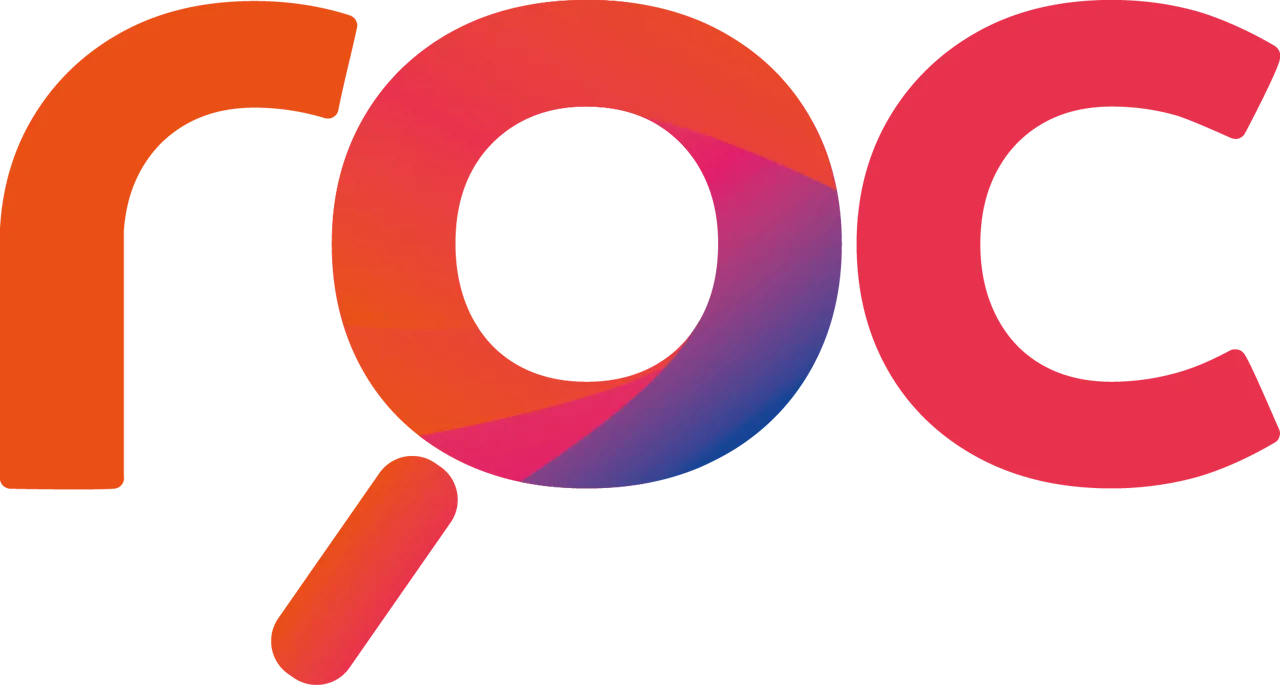What is Front-end vs Back-end Development: The Distinctions
29 Feb, 20244 minutesIn today's digital world, understanding the intricacies of the two pillars of web develo...

In today's digital world, understanding the intricacies of the two pillars of web development, front-end and back-end development, is crucial for anyone looking to embark on a career in tech or seeking to enhance their existing skills. Developers are in high demand as the markets continue to surge in both areas due to increased interest in web and mobile application development.
This guide discovers the fundamental concepts, essential tools, and emerging trends in front-end and back-end development. We equip you with valuable insights to navigate the world of web development and offer insight into potential career opportunities. We will explore how the combination of front-end and back-end development is vital in full-stack development and touch on its equally important role within the industry.
So, let’s delve into the question of ‘what is front-end vs back-end development?:
What is Front-end Development?
First, we will begin with front-end development, which involves creating the visual and interactive components of a website or web application that users directly engage with. Developers use languages to design the user interface (UI), user experience (UX), and overall visual elements. Responsibilities include layout design, navigation implementation, multimedia integration, and ensuring responsiveness across devices. Front-end development primarily deals with what users see and interact with within their web browsers.
The global Web Development market is predicted to grow at a CAGR of 8.08% and reach USD 96748.41 million by 2028. This figure highlights the market's rapid growth within the sector due to increased demand for web and mobile apps across various sectors, from education to healthcare, demonstrating significant global influence. As demand for front-end development services rises, a huge demand for talented professionals exists.
Now that we have pinpointed the definition and importance of front-end development let’s delve deeper into the essential front-end developer jobs and the responsibilities they entail:
Front-end Developer Jobs and Responsibilities
Here are some examples of the most essential front-end developer jobs and responsibilities involved in the role:
- User Interface Designer (UI) - As UI designers, front-end developers enhance the visual appeal of websites or applications. They design and develop the website's appearance, layout, and colour palette. Design tools such as Photoshop and Illustrator produce mockups and prototypes, demonstrating the planned layout and features. Working closely with stakeholders, UI designers grasp the target audience's requirements and transform them into user-oriented design choices.
- User Experience Designer (UX) - In User Research and Testing, designers use surveys and interviews to understand user needs. Subsequently, they conduct usability testing to refine the interface based on real-user feedback. Collaboration with front-end developers is integral, involving clear communication and iterative design processes to ensure the product meets user expectations. Additionally, UX designers prioritise accessibility, ensuring adherence to guidelines to make the interface inclusive for individuals with disabilities.
- Coding - Front-end developers translate visual designs into functional code using HTML, CSS, and JavaScript, construct page layouts, and implement interactive elements like buttons and menus. They ensure adaptability across different devices through responsive web design techniques. Writing clean and maintainable code facilitates future modifications and optimises website performance through techniques like code minification and image optimisation.
Languages
Front-end and back-end developers typically use different programming languages tailored to their specific roles and responsibilities. Here's a breakdown of how the key programming languages are used in font-end developer jobs:
- HTML - Constructing the page structure involves defining elements using HTML tags representing components like headings, paragraphs, and images. Developers organise these tags to establish clear relationships between elements, promoting content interpretation by web browsers. HTML also facilitates multimedia features, such as images and videos, enhancing visual appeal and user engagement.
- CSS - Styling HTML elements with CSS enables front-end developers to customise their visual appearance, including font styles, colours and spacing, to create visually appealing layouts. CSS provides various methods for selecting styles, such as targeting specific HTML tags, classes, or IDs. Developers utilise CSS to position elements on the page effectively, employing techniques like static and relative to create responsive layouts for various screen sizes and devices.
- JavaScript—Front-end developers use JavaScript to develop highly interactive websites. JavaScript can be used to change what users see on a webpage without reloading it, handle user clicks and inputs, validate form submissions, and fetch data from servers without interrupting the user's experience. JavaScript also helps integrate external services like maps and social media into websites, making them more engaging for users and creating overall user-friendly and interactive web experiences.

Frameworks
Below are some of the most essential frameworks used in front-end developer jobs to develop web and mobile applications:
- React.js - According to recent research, React.js continues to be the most popular front-end JavaScript library, with a market share of over 40%. With React.js, developers design the user interface as a collection of reusable components, each with its functionality and appearance. These components are written using JSX, a syntax extension that blends HTML-like tags with JavaScript code, simplifying the creation of user interface elements. React.js optimises performance by minimising unnecessary re-renders, resulting in faster and smoother user experiences.
- Angular - Angular offers a toolkit for building single-page applications. Developers structure their applications using components that account for both the UI and logic for specific application parts. These reusable components can be easily managed within Angular's modular architecture. Angular's built-in features, such as data binding and dependency injection, streamline the development process.
- Vue. js - Vue. js is a progressive JavaScript framework that enables developers to easily create interactive components. Its simple and flexible syntax makes it ideal for integrating UI elements into small-scale projects and large-scale applications. Vue.js offers powerful features such as data binding, component-based architecture, and a reactive data model, allowing developers to create engaging, efficient applications.
What is Back-end Development?
When looking at a front-end vs back-end developer, back-end developers focus more on the server-side logic and functionalities that power the front-end. They manage data, process requests from the front end, and handle the application's business logic. Back-end developers build server-side logic, including tasks like database management, user authentication, API implementation, and server infrastructure management. Back-end development deals with behind-the-scenes operations that enable front-end functionality, such as form processing, database interaction, and data manipulation.
Back-end Developer Jobs and Responsibilities
According to recent research, the number of back-end web developers will increase by 13% between 2020 and 2030. This figure demonstrates the rise in demand for back-end developer jobs, reflecting the significant growth within the industry.
Here are some of the key back-end developer jobs and responsibilities within the industry:
- Back-end Developer - Back-end developers are responsible for building and maintaining the server side of web applications. Their roles include designing and developing the server-side logic, databases, and APIs that enable the front-end to interact with the back-end. Back-end developers ensure the application's security and performance by managing tasks like user authentication, data storage, and server optimisation through coding and using programming languages such as Python.
- Back-end Engineer - Similar to a back-end developer, engineers have a broader role that includes coding and designing the back-end systems' architecture, optimising performance, ensuring scalability, and managing the overall back-end infrastructure. While both roles involve working on the back end of web applications, a back-end engineer may have a more strategic and holistic approach to back-end development, entailing aspects beyond just coding.
- SQL Developer - SQL developers are responsible for designing, implementing, and maintaining relational databases to support various software applications. Their roles involve creating database structures, writing SQL queries, and optimising database performance. SQL developers collaborate with software developers and other stakeholders to understand data requirements and ensure databases meet application needs. They handle tasks like data migration, backup, and recovery and troubleshoot issues as they arise.
Languages
Next, we'll look at the main programming languages back-end developers use, touching on how they tie in with their different responsibilities and back-end developer jobs and roles:
- Python - Back-end developers use Python to build the server-side logic of web applications. Python's versatility and ease of use make it a popular choice for back-end development. As Python has several extensive libraries, developers can integrate various functionalities such as authentication, authorisation, and data processing efficiently. Python's scalability and performance make it suitable for handling large-scale applications and complex tasks, streamlining the development process.
- Ruby - Back-end developers use Ruby to build the server side of web applications. With Ruby's straightforward syntax and extensive ecosystem, developers can create powerful back-end systems efficiently. They often work with frameworks like Ruby on Rails, which provides tools and conventions to streamline development. Using Ruby, back-end developers handle tasks such as managing databases, implementing business logic, and handling requests from the front end.
- PHP - With PHP's database interaction capabilities, back-end developers use the language to connect and manipulate various database management systems, retrieve specific information, and manage data-driven aspects of web applications. PHP facilitates personalised user experiences through session management, enabling the tracking of user activity, maintaining login status, and implementing features like shopping carts. Developers can generate personalised and interactive features.
To learn more about the programming languages most beneficial to your career, discover our insightful guide - Comparing Programming Languages of 2024.
Frameworks
- Django - Django, written in Python, provides developers with extensive libraries for building server-side logic, managing databases, and handling user authentication. Developers can quickly prototype ideas and focus on implementing business logic. Django's emphasis on DRY (Don't Repeat Yourself) principles and its adherence to best practices mean back-end developers can ensure code maintainability and scalability.
- Lavarel - Back-end developers use Laravel to quickly build powerful web applications in the PHP language. Laravel provides various features, including Eloquent ORM for database management and authentication scaffolding. Its expressive syntax and built-in functionalities enable rapid development while adhering to modern standards. Laravel's modular structure and active community support further enhance its efficiency and ease of use, making it a top choice for back-end development.
- Spring Boot - Back-end developers use Spring Boot to build Java-based web applications efficiently. Spring Boot simplifies setup tasks, allowing developers to focus on writing robust server-side logic, managing databases, and implementing security features. Integration with other Spring projects enhances productivity, while its emphasis on convention over configuration and extensive documentation makes it a preferred choice for scalable and efficient back-end development.
The Importance of Full Stack Development
Firstly, what is full stack development, and how does the collaboration of front-end and back-end developers contribute to achieving this?
Full-stack development is the process of building both the front-end and back-end parts of a web application. A full-stack developer is proficient in both front-end and back-end technologies, allowing them to work on all areas of a project, from designing user interfaces to managing databases. A LinkedIn report stated that since 2015, the demand for full-stack developers has increased by 35% annually, highlighting the increased importance and demand for full-stack development in the tech industry.
Full-stack development is important because it equips developers with a skill set covering both front-end and back-end development. Here are some key reasons why full-stack development is valuable:
- Versatility: Full-stack developers have expertise in front-end and back-end technologies, allowing them to work on all aspects of a project. This versatility makes them valuable assets to development teams and companies.
- Collaboration: Full-stack developers can bridge the gap between front-end and back-end teams, facilitating communication and collaboration. They can understand and contribute to various parts of a project, leading to smoother development processes.
- Faster Development Cycles: With knowledge of both front-end and back-end technologies, full-stack developers can independently work on features without relying on multiple team members, leading to faster development cycles.
- Problem-solving: Full-stack developers possess a broad understanding of software development, enabling them to troubleshoot issues across the entire stack. Their ability to identify and cultivate problems efficiently is a valuable asset in any development environment.
- Cost-effectiveness: Hiring full-stack developers can be more cost-effective for companies than hiring separate front-end and back-end developers. Companies can optimise their resources and streamline their development teams with one developer handling multiple responsibilities.
- Improved user experience: Full-stack developers are equipped with front-end and back-end development knowledge, offering a holistic approach to creating user-centric experiences. They optimise performance, guarantee seamless data transmission, and construct intuitive interfaces to enhance user satisfaction.
What is Front-end vs Back-end Development: Final Thoughts
Front-end and back-end development are two essential pillars of web development, each serving distinct purposes yet intertwined in creating cohesive digital experiences. Front-end development focuses on designing and implementing the visual and interactive elements that users directly interact with, emphasising user interface design, user experience, and responsiveness across devices. The demand for front-end developers continues to surge as the need for web and mobile applications grows across various industries, underlining their critical role in shaping digital experiences.
On the other hand, when comparing front-end vs. back-end development, back-end development entails the server-side logic and functionalities that power the front end, managing data, processing requests, and handling business logic behind the scenes. Back-end developers ensure the seamless functioning of web applications, addressing tasks such as database management, user authentication, and server optimisation. The demand for skilled back-end developers remains strong, reflecting their integral role in driving the functionality and performance of web applications.
While front-end and back-end development have distinct responsibilities and skill sets, the emergence of full-stack development highlights the value of bridging these domains. Full-stack developers proficient in front-end and back-end technologies bring versatility, collaboration, and problem-solving to development teams. Their ability to navigate across the entire stack enables faster development cycles, cost-effectiveness, and enhanced user experiences, making them invaluable assets in the ever-evolving realm of web development.
Placing Expert Developers in Top Tech Businesses
Whether you are a candidate searching for your next front-end or back-end developer role or a business searching for suitable candidates to join their tech team, we have a team of specialist recruiters who can meet your unique requirements.
Our skilled team dedicates time to comprehending your career goals, values, and aspirations. Leveraging our vast international network, we possess the resources necessary to fulfil your requirements.
Contact us today to take the first step.





